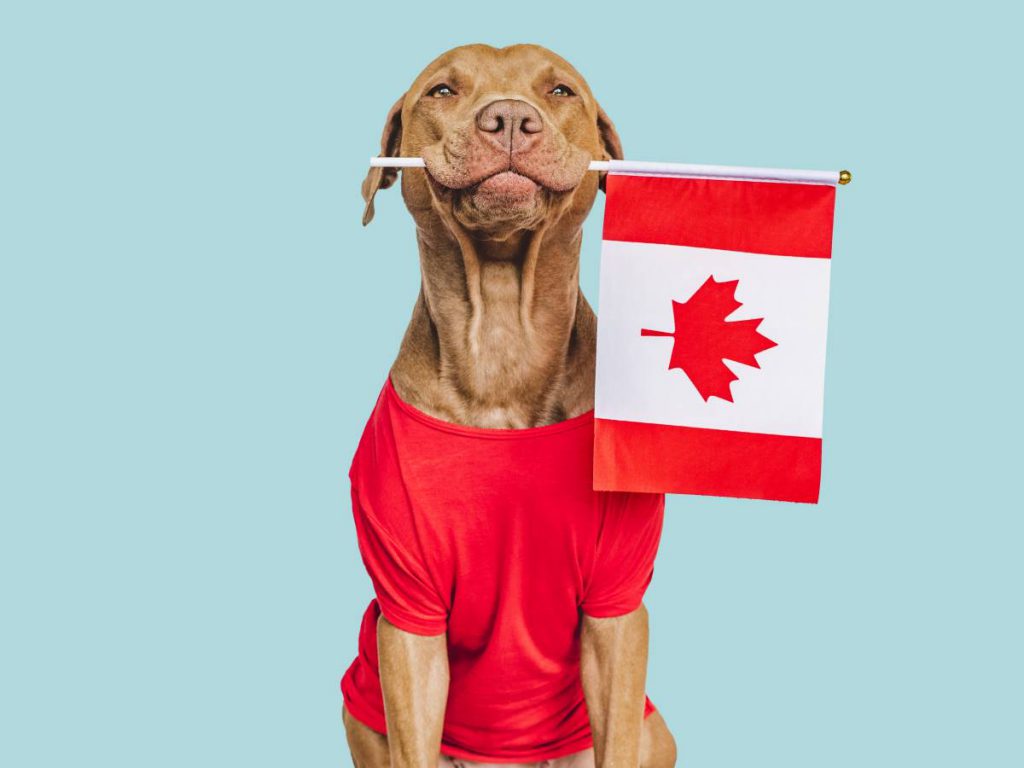Pets are loved by people all over the world. Thus some people seek to bring their pets with them when coming to Canada. There are also groups of people from Canada who wish to import animals for commercial and non-commercial purposes. However, escorting animals into Canada requires meeting specific regulations. This article will explain the steps involved in bringing pets or other animals into Canada.

Guidelines For Importing Animals Into Canada
Bringing animals into Canada is technically classified as animal importation, with the exportation and the importation managed and controlled by the Canadian Food Inspection Agency (CFIA). CIFA conducts careful inspections at all Canadian entry points to regulate the importation of animals.
The restrictions and requirements vary based on the animal, export country, health status, species, and the purpose of importation. In some instances, pet owners need to obtain a permit to bring the pet into Canada or a certification from a veterinarian to state the animal is disease-free. In other scenarios, pets and animals are quarantined for a period of time before receiving the go-ahead to enter Canada. With these steps in place, animal owners must know the requirements that must be satisfied. In the remainder of this article, we’ll outline the specifics involved.
The Steps Involved In Bringing Dogs Into Canada
If it is healthy and disease-free, bringing a dog into Canada is not too arduous. Follow the procedures outlined below.
Personal importation
Personal importation can be when a Canadian resident:
- Imports a dog of any age, and
- The dog travels with the owner (if older than 8 months old), or
- Service personnel accompanying their service dog.
There are no permits required for personal importation. Unless the dog is less than 3 months old, a rabies vaccination is required.
Commercial Importation
This is importing dogs for:
- Adoption,
- Breeding,
- Sale,
- Exhibition,
- Shows,
- Animal welfare organizations, or
- Scientific research.
As with Personal Importation, a rabies vaccination is required unless the dog is less than 3 months old.
Personal and Commercial Importation: What Happens At The Canadian Border?
When crossing the border, Canada Border Services Agency (CBSA) will carry out an inspection. In some circumstances, a CFIA agent will also carry out a check. All dog owners should visit the Automated Import Reference System to find out if their dog requires an inspection by the CFIA.
The CBSA inspection is CA$ 31.27 plus tax. There is a further CA$ 5.21 plus tax for each additional dog in the shipment.
People wishing to bring dogs into Canada should also note:
- If requirements are not met for Rabies certification, additional fees will be levied along with the need to certify for rabies vaccination within 2 weeks of arrival.
- Tattoo or microchip identification is not required for personal importation.
- Dogs under 8 months of age for commercial importation require electronic microchip identification.
- If arriving by plane, the importers should check the airline requirements as they will require other documentation and restrictions.
The Steps Involved In Bringing Cats Into Canada
The biggest concern with importing cats to Canada is the possibility of transmitting rabies. Thus, stringent laws are in place to ensure imported cats are rabies-free. Cat owners must prove their animals are free of viral disease. One of the following three ways must be used to prove that a cat is free from rabies:
- Certification of Rabies Vaccination. A veterinarian certificate must be obtained to prove the cat has a rabies vaccination. The certification must:
- Be written in English or French.
- Be Issued through a licensed veterinarian.
- Identify the cat through color, breed, and weight.
- State the cat has been in the exporting country since birth or the 6 months before export.
- Veterinary Certificate from the government authority to state there has not been a rabies outbreak in the country in the previous 6 months before export.
- An EU pet passport (it has all the details found in the Certification of Rabies Vaccination).
Cat Importation: What Happens At The Canadian Border?
There is no need to make prior arrangements before travelling with pets, and there is no requirement for quarantine. Nor is there any need for import permits or health certificates (other than documentation to state the cat is free from rabies). When arriving at the border:
- You can expect an inspection from the Canada Border Services Agency.
- You will need to pay CA $30 plus vat for the inspection.
- Further, CA$ 5 plus is required for each additional cat.
- If requirements are not met for Rabies certification, additional fees will be charged, and the need to certify for rabies vaccination within 2 weeks of arrival.
Additional Details On Importing Cats To Canada
There is no need for tattoo or microchip identification, but checks should be made with the airline as they will have additional requirements. Different sets of laws are in place for non-domestic cats. Owners of such cats need to visit the Automated Import Reference System website for further details.
Other Animals
Though dogs and cats are extremely popular, people import other animals too. Some of these are discussed below:
Amphibians And Reptiles
Reptiles such as crocodiles, iguanas, and snakes are not permitted in Canada as pets through the Health of Animals Regulations. They can, however, be brought to the country as wildlife. The same is applicable to turtles and tortoises. They are not allowed in the country as pets but can be imported by zoos and research labs.
Birds
As long as the birds are coming from a country acknowledged by the Canadian authorities as a place free from avian flu, birds can be imported into Canada. You can find the list of permissible countries here. But an import permit and quarantine are required in all instances.
Ferrets
An import permit is required to bring ferrets to Canada. It is best to refer to the Automated Import Reference System (AIRS) or contact the CFIA Animal Health Office for further information. If the export is taking place from the United States, no permit is required though a rabies vaccination certificate (for ferrets older than 3 months) from a licensed veterinarian is required.
Horses
Bringing horses to Canada from the USA is easier than other countries. The person must obtain the US Department of Agriculture Certificate VS 17-145 or VS 17-140 for American exports. Live animal transportation of horses from other parts of the world, such as the European Union, has more strict conditions. You can read more about it here on the Canadian government website.
Rodents
Rodents such as Guinea pigs, mice, hamsters, and chinchillas can be imported into Canada without any health certificates or import permits. An inspection at the border may take place to ensure the animals were transported humanely. However, there are restrictions in place for:
- Prairie dogs,
- Gambian pouch rats,
- Squirrels, and
- All rodents from Africa
Contact the CFIA Animal Health Office for more details.
Rabbits
Importing rabbits from countries other than the USA requires import permits and quarantine. Permits must be obtained at least 30 days before arrival, and there is a need to sign declarations:
- To suggest the animals are in a person’s personal possession as pets.
- To say the pet owner will personally bring the animals to Canada (you may need a certificate of ownership).
- To agree for the rabbits to be quarantined.
Fish And Other Aquatic Pets
Import permits are required for any species on the Susceptible Species of Aquatic Animals list. The list includes various types of Crustaceans, Finfish, and Molluscs, such as certain kinds of crayfish, barbel, and various types of oysters. Import permit exemption applies to some aquatic animals such as Goldfish, Zebrafish, and Pool Barb. Find out more about the import requirements here on the Canadian government website.
Bringing Your Animals To Canada
Importing pets and other animals into Canada is commonplace. To prevent disease and ensure the welfare of existing animal species, laws regarding the importation of pets and other animals are in place. Check the guidelines and obtain the necessary documents to ensure a smooth passage.






